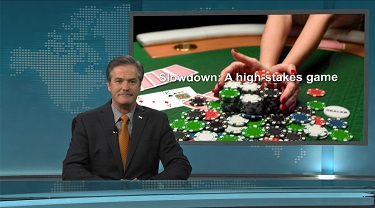This is no charade. The fact is, global growth is slowing, and rapidly. Bets on global recession are multiplying. And it’s no longer just the bellwether signals going south; measured activity is also sliding at an alarming rate. Like an approaching storm, is the weakening inevitable? Is hunkering down and riding it out, and hoping we get through this one with minimal damage really the best we can do?
Forward-looking indicators have been telling the story for a while. Purchasing managers gave over six months’ notice of what we now see. Hints were also obvious in equity market volatility. To many, negative interest rates, monetary easing and the prospect of yield curve inversion are close to sure signs of economy-wide contraction. One look at both global industrial production and world export activity, and the crowd is convinced—the good times are over, we are now in deep trouble, and it doesn’t look like there is any way out.
But is activity universally negative? A deeper look at recent GDP numbers is eye-opening. There’s clearly something wrong with global trade; exports seem to be down everywhere. The same is true for fixed investment—suddenly, business is backing away from things, and spending on both equipment and, more significantly, for buildings and other fixtures is in the red. Flip over to the consumer side, and the opposite is true: unemployment is about as low as it ever gets, skilled labour is in very tight supply, job creation continues, income is growing, and spending by consumers—the bulk of total spending in most economies—is very much in the black.
That’s just not normal. Typically when the economy is ready for recession, it’s ready on all fronts: it dawns on consumers that they’ve overdone it, businesses realize they have over-produced to keep up with over-spending, international trade has, in today’s globalized world, taken a lead in the excess—and it all implodes together. That’s the 2008-2009 story in a nutshell. Why today’s polarized performance?
It’s a long story, but here’s the sequence: inadequate post-recession growth left millions behind for many years. Their discontent fomented into populism, which ultimately elected leaders to fix the problem. Policy, particularly on the trade front, is now disrupting the established order, upsetting export and import flows, and causing business to back off. The big impasses—the U.S.-China trade spat, and its U.K.-EU cousin—together with less prominent skirmishes, are a high-stakes game where the players are all-in: yes, it seems that the chips are now all on the table, and we, the onlookers, await the final verdict.
What’s at stake? The outcome decides whether we weather a recession, or re-ignite growth. Fundamentals suggest there’s little reason for a downturn; the imbalances of 2008 are simply not there. This time it’s a policy choice—and presuming that nobody around the table wants the label of recession-creator, we believe that resolution is on the way.
The EDC economics team’s fall 2019 Global Economic Outlook acknowledges the current slowing, but sees a pickup in activity through 2020 that gathers momentum into 2021. Global growth slips to 3.0% this year, is back up to 3.6% in 2020 and rises to 4.2% in 2021. The same pattern is obvious in the developed world, where average growth swells to 2.5% in 2021 and in emerging markets where the pace is more than doubled at 5.2%. Commodity prices follow suit, although gains are modest.
Unlike other OECD nations, Canada’s domestic fundamentals are weak. However, the global revival saves the day for us. A stable, mildly appreciating Canadian dollar further supports export growth which, rising to 5.7%, offsets enough of the consumer weakness to generate 2.1% overall growth by 2021.
The bottom line?
The stakes rarely get higher. Logic asserts that resolution of key trade impasses is in everyone’s best interests. It’s in the hands of a very few players, and in the U.S. case, one decision by one person could—and likely will—change the whole game.
This commentary is presented for informational purposes only. It’s not intended to be a comprehensive or detailed statement on any subject and no representations or warranties, express or implied, are made as to its accuracy, timeliness or completeness. Nothing in this commentary is intended to provide financial, legal, accounting or tax advice nor should it be relied upon. EDC nor the author is liable whatsoever for any loss or damage caused by, or resulting from, any use of or any inaccuracies, errors or omissions in the information provided.





